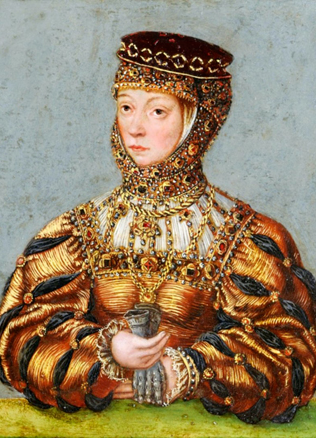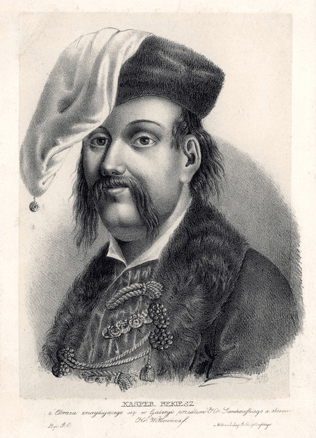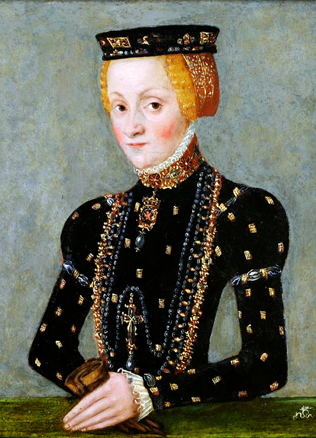The Sejm of the Grand Duchy of Lithuania in the 15th–mid-16th centuries
The Sejm of Lithuania was a result of geopolitical factors and the privileges granted to the estates by the Ruler. In the Middle Ages, Lithuania’s rulers solved the issues in a circle of relatives and the most influential noblemen (most often dukes). The historians call this circle the Council of the Grand Duke according to the name that was common in the 15th century. True, its definition in the sources sometimes raises unnecessary associations with the present-day state institutions, so it can mislead an inexperienced reader. Peter of Dusburg, when writing about the meeting convened by Duke Vytenis in 1306, defined it by the term tractatus seu parlamentum. That was a meeting of the Ruler’s reliable advisers only rather than that of the representatives of wider society.
Levers of power in the hands of the noblemen
At the turn of the 14th–15th centuries, after the baptism of Lithuania, the noblemen began to play an important role in the Council of the Ruler. The privileges granted to them in 1387 gradually formed culture of the relation between the Ruler and the noblemen based on written law. The understanding of the provisions of the privileges is of interpretative nature therefore the relations based on official letters provide for the relations established more than once and for good, and a continuous dialogue between the giver and receiver of the official letter.
The Ruler went on safeguarding the rights received by the noblemen therefore the latter tried to take advantage of every case of the Ruler’s weakness provoked by geopolitical actions to extend their rights, including the political ones.
These efforts gradually united the nobility, beginning with the most influential, active and conscious and ending with the widest masses of the nobility. Thus, when concluding the 1401 Vilnius-Radom Agreement, which provided for the future of the throne of the Ruler of Lithuania, the meeting of the Bishop of Lithuania and the lords confirmed it with responsibility. Some historians consider it to be the first Sejm of Lithuania but it seems that those who say that it was an extended meeting of the Council of the Grand Duke are right. Until the beginning of the fourth decade of the 15th century such meetings had an obvious Catholic shade. Though later this situation was changed by the 1432 privilege of Zygmunt Kiejstutowicz, which granted the rights of the Lithuanian noblemen to the orthodox noblemen (with the exception of the right to fill in the highest state offices), and a small informal group of Catholic noblemen became established in all most important offices, which adopted the decisions that were of extreme importance to the country. The unstable position of Lithuania’s Rulers after the death of Vytautas until Casimir Jagiellon established himself allowed this group to gain even more rights and valuable political experience. Between 1430 and 1440, they elected their rulers three times, most often disregarding the opinion of the ruling dynasty (the Jagellonians). They demanded and obtained new privileges from every new ruler.
Do You Know?
The 1447 privilege granted by Casimir Jagiellon, which granted wide economic rights (immunities) to the noblemen, was of great significance. After the Ruler left for Poland in 1447, the nobility of Lithuania became real governors of the state who did not allow the Ruler to involve the country in the Thirteen Years’ War (1454-1466) between Poland and the Teutonic Knights, and later they themselves got mixed up in the conflict with Poland over Volhynia. All these events showed a political growth of independence of the Lithuanian nobility.
Do You Know?
However, until the 1566 reform the nobility of the districts was not granted the right to vote in the Sejm. The Chancellor of Lithuania Albertas Goštautas defined the then position of the noblemen in the Sejm precisely in the memorial written to Queen Bona in 1525: “In our country the Sejms work in quite a different manner: what the Royal Highness decides with the lords our noblemen must carry out. We invite the noblemen to our Sejms partly out of deference, and on the other hand, because we want them to know everything what we decide.”
It was in the documents of the second half of the fifth decade of the 15th century that the first mentions of the Sejm (соимъ) was found. Do they mean any organisational change in the meetings of the Lithuanian nobility? Hardly. The contexts of the documents in which the Sejm is mentioned confirm this doubt: the Council of Lords (наша верная рада) is the acting part of the Sejm in all the documents. The composition of the Council was not defined anywhere though the individuals who were established in certain offices were always invited to take part in it: Catholic bishops, Voivodes and castellans of Vilnius and Trakai. That part of the Council was most often referred to as the senior one (maiore et seniore consilio), alongside it sometimes the wide Council gathered who consisted of the court and state officials and some dukes residing on the edges of the state. Participation of the latter in extended meetings, which were also referred to as general Sejms (conventio generalis, conventus terrarum, сеим вальныи) at the end of the 15th century, was sometimes understood as a testimony to the representation of the noblemen in adopting decisions that were of special significance to the state. These people, however, represented only themselves though, when it was convenient to them, defended the rights of the communities of their regions too.
Do You Know?
With the Ruler residing in Poland most often, the executive power belonged to a small and consolidated group of noblemen. It was in 1492 that the latter demanded and obtained from the newly elected Grand Duke Alexander the privilege and new political concessions: “Also, when it is necessary to consider some decisions and matters during the meeting with our lords and those lords will not approve of them, we must not get angry with them but what they will advise for our and common benefit we shall implement”. This meant that no important changes in the state could be made without the approval of the nobility.
The noblemen take over the baton
The documents at the turn of the 15th–16th centuries contain hints about the participation of the noblemen in the ordinary meetings of the Sejm. However, it is not mentioned that they had authorisations granted to them by the noblemen of their region. The regional nobility of the Grand Duchy of Lithuania failed to win the right to participate in the Sejm; it received it from the Ruler. Almost constant wars with the state of Moscow that began at the beginning of the 16th century turned into never ending problems of the Treasury. It was possible to replenish the Treasury by imposing taxes on the real property of the nobility, which constituted more than half the assets of the state. But the 1447 privilege of Casimir Jagellonian liberated the peasants of the noblemen from paying almost all the state taxes and duties. To impose taxes on the noblemen it was necessary for the Ruler to achieve that the noblemen themselves voluntarily refused the rights they had.
Do You Know?
It seems that it was the Council of Lords that blessed the first attempts to collect taxes from the peasants of the noblemen. But this provoked the noblemen’s protests. Therefore, the Ruler, seeking to strengthen lawfulness of the taxes being collected from the peasants of the noblemen for military purposes, ordered the elders of the state estates to take only two representatives of the nobility of the district to the Sejm. They appeared in Vilnius Sejm for the first time in 1512. However, until the 1566 reform the nobility of the districts was not granted the right to vote in the Sejm. The Chancellor of Lithuania Albertas Goštautas defined the then position of the noblemen in the Sejm precisely in the memorial written to Queen Bona in 1525: “In our country the Sejms work in quite a different manner: what the Royal Highness decides with the lords our noblemen must carry out. We invite the noblemen to our Sejms partly out of deference, and on the other hand, because we want them to know everything what we decide.”
In the middle of the 16th century the position of the noblemen began to change slowly in the Sejm. The voice of the noblemen, even if the Ruler and the Lords of Lithuania did not give it to them, was heard more clearly in the political life. At the end of the rule of Sigismund the Old, envoys of the regions of the Grand Duchy of Lithuania arrived at the Sejms more and more often with the requests dictated by their “brothers” (the noblemen of the district). Most often those requests reflected everyday problems of the noblemen; however, there were also political requirements: not to break the privileges granted, to establish new offices. But it was due to the campaign of political disobedience rather than due to the requests submitted to the Sejms that the nobility of the Grand Duchy of Lithuania obtained the right of full-fledged representation in the Sejm. In 1562, during the war with Moscow, the army of the noblemen of the Grand Duchy of Lithuania located near Vitebsk, declared their political will that was quite hostile to the Lithuanian nobility on the issue of the union with Poland that was of great significance to the state. After that, when the noblemen’s request to convene the Sejm had been rejected, on 13 September, the noblemen wrote a petition to the Ruler in which they asked for the common Sejm and a new union with Poland and for political rights of the Polish noblemen for themselves, that is, the right to vote in the Sejms. The Lithuania’s nobility tried to “choke” that campaign carried out by the noblemen and simply ignored it. However, the Ruler pressed by the Poles with respect to the union had already the argument in the negotiations with the nobility that the noblemen were not the whole of Lithuania. Hence, the noblemen had to yield. They approved of the Second Statute of Lithuania that came into force in 1566 and abolished the largest part of the privileges that the nobility had. The Statute finally legalised the practice of representation of the noblemen in the Sejm with the right to vote that was in force in Poland. This unification of the structures of the Sejms of the Grand Duchy of Lithuania and the Kingdom of Poland was an important step taken towards the Union of Lublin.
Literature: R. Petrauskas, Lietuvos Didžiosios Kunigaikštystės seimo ištakos: Lietuvos didžiojo kunigaikščio taryba ir bajorų suvažiavimai XIV–XV a., Parlamento studijos, t. 3, 2005.
Eugenijus Saviščevas



